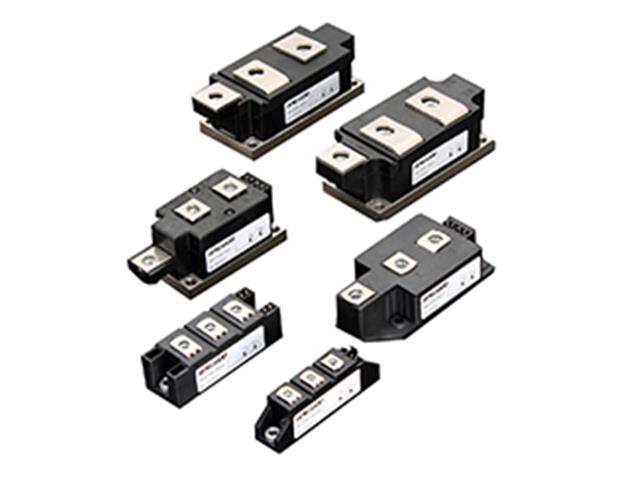What is the main differences between Type 1 and Type 2 SPD?
Type 1 and Type 2 Surge Protective Devices (SPDs) are two different categories of surge protectors used for various levels of protection against power surges. The main difference between these types lies in their specific applications and their placement within the electrical system.
Type 1 SPD (also known as Type 1 Surge Arrester)
Type 1 SPDs are designed to protect against the most severe and direct lightning strikes. They are typically installed at the service entrance of a building, before the main electrical distribution panel. Their primary purpose is to divert and absorb large amounts of lightning current directly from lightning strikes, thereby preventing it from entering the building's electrical system. These SPDs have high discharge capacity and are capable of handling extremely high surge currents generated by lightning events.
Type 2 SPD (also known as Type 2 Surge Protector)
Type 2 SPDs are more commonly used to protect sensitive electrical and electronic equipment within the building from surges that may originate from within the electrical distribution network or nearby sources. They are installed after the main electrical distribution panel and are designed to handle lower surge currents than Type 1 SPDs. These devices provide protection against power surges caused by switching operations, power grid fluctuations, and indirect lightning strikes.
In summary, the main differences between Type 1 and Type 2 SPDs are:
Application: Type 1 SPDs are used to protect the entire building from direct lightning strikes and are installed at the service entrance. Type 2 SPDs are installed after the main distribution panel to protect individual devices and equipment from surges within the electrical system.
Protection Level: Type 1 SPDs offer a higher level of protection, capable of handling extremely high surge currents generated by direct lightning strikes. Type 2 SPDs are designed for lower surge currents, typically generated by internal electrical events or nearby indirect lightning strikes.
Installation Location: Type 1 SPDs are placed at the service entrance, while Type 2 SPDs are installed at the distribution panel or sub-distribution panels within the building.
It's worth noting that a comprehensive surge protection strategy may involve using both Type 1 and Type 2 SPDs in combination, along with other protective measures, to ensure maximum protection for electrical systems and connected devices. The selection of the appropriate surge protection devices depends on the specific requirements and risks associated with the electrical system's location and the level of exposure to potential surge events.

𝐃𝐢𝐟𝐟𝐞𝐫𝐞𝐧𝐜𝐞 𝐁𝐞𝐭𝐰𝐞𝐞𝐧 𝐃𝐮𝐚𝐥 𝐓𝐡𝐲𝐫𝐢𝐬𝐭𝐨𝐫 𝐌𝐨𝐝𝐮𝐥𝐞 𝐃𝐮𝐚𝐥 𝐃𝐢𝐨𝐝𝐞 𝐌𝐨𝐝𝐮𝐥𝐞 𝐚𝐧𝐝 𝐓𝐡𝐲𝐫𝐢𝐬𝐭𝐨𝐫-𝐃𝐢𝐨𝐝𝐞 𝐌𝐨𝐝𝐮𝐥𝐞
𝐃𝐮𝐚𝐥 𝐓𝐡𝐲𝐫𝐢𝐬𝐭𝐨𝐫 𝐌𝐨𝐝𝐮𝐥𝐞 vs 𝐃𝐮𝐚𝐥 𝐃𝐢𝐨𝐝𝐞 𝐌𝐨𝐝𝐮𝐥𝐞 vs 𝐓𝐡𝐲𝐫𝐢𝐬𝐭𝐨𝐫-𝐃𝐢𝐨𝐝𝐞 𝐌𝐨𝐝𝐮𝐥𝐞, what's their difference from function and structure?
Read More
Sintering process in the chip of solid-state relays is of significant importance.
The use of sintering process in the chip of solid-state relays is of significant importance, primarily for the following reasons
Read More
Advantages of Low Voltage Drop DC Solid-State Relays - Heatsink is not required
Low voltage drop DC solid-state relays offer significant advantages in terms of efficiency, low heat generation, and high reliability, making them particularly suitable for applications requiring high efficiency and low energy consumption.
Read More
How solid state relays work? Testing SSR with multimeter and wiring.
How solid state relays work? Hoto to Test a solid state relay with multimeter? How to connect a SSR relay from PLC to heater? You will get an answer.
Read More













